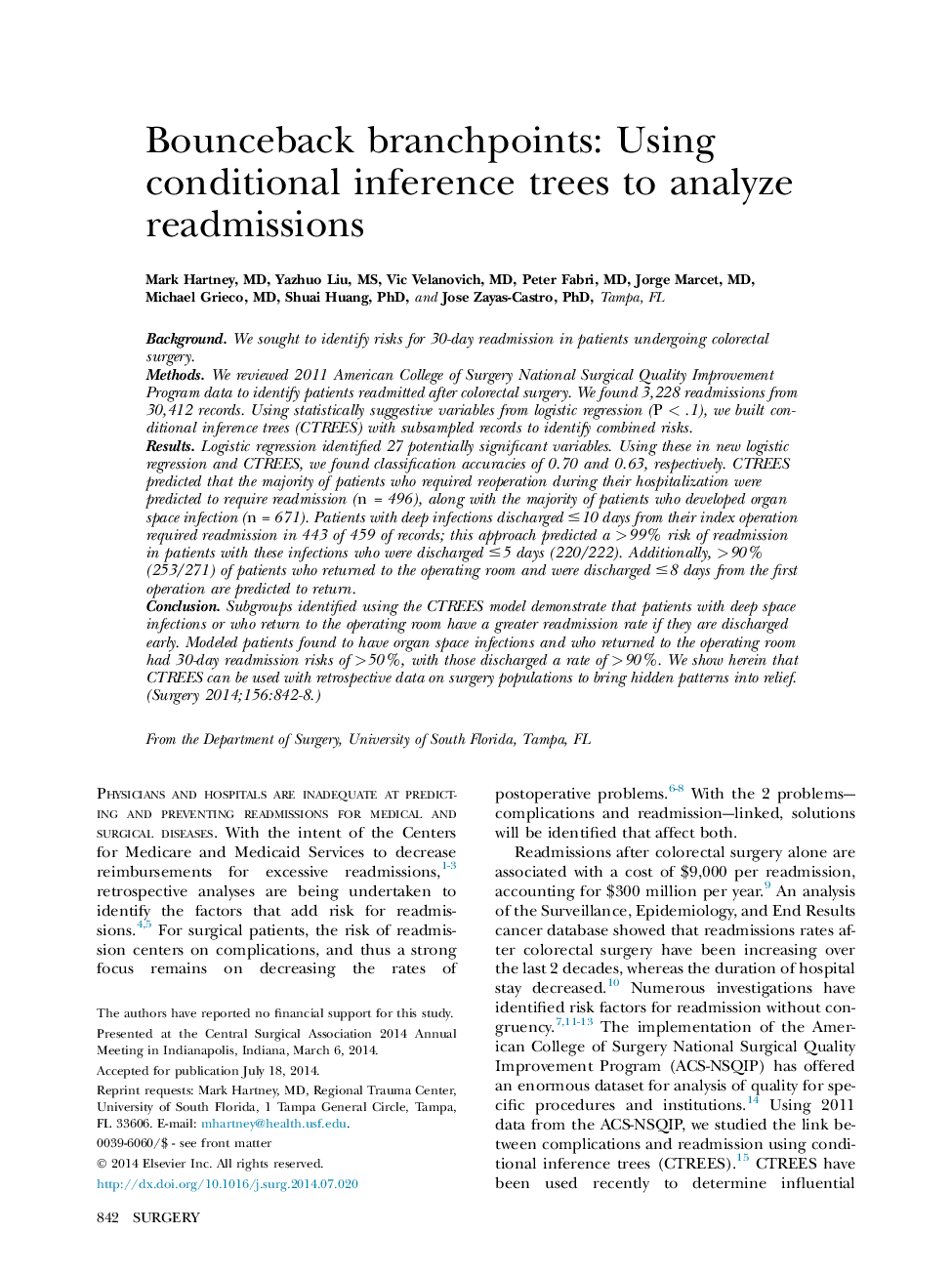| Article ID | Journal | Published Year | Pages | File Type |
|---|---|---|---|---|
| 4307627 | Surgery | 2014 | 7 Pages |
BackgroundWe sought to identify risks for 30-day readmission in patients undergoing colorectal surgery.MethodsWe reviewed 2011 American College of Surgery National Surgical Quality Improvement Program data to identify patients readmitted after colorectal surgery. We found 3,228 readmissions from 30,412 records. Using statistically suggestive variables from logistic regression (P < .1), we built conditional inference trees (CTREES) with subsampled records to identify combined risks.ResultsLogistic regression identified 27 potentially significant variables. Using these in new logistic regression and CTREES, we found classification accuracies of 0.70 and 0.63, respectively. CTREES predicted that the majority of patients who required reoperation during their hospitalization were predicted to require readmission (n = 496), along with the majority of patients who developed organ space infection (n = 671). Patients with deep infections discharged ≤10 days from their index operation required readmission in 443 of 459 of records; this approach predicted a >99% risk of readmission in patients with these infections who were discharged ≤5 days (220/222). Additionally, >90% (253/271) of patients who returned to the operating room and were discharged ≤8 days from the first operation are predicted to return.ConclusionSubgroups identified using the CTREES model demonstrate that patients with deep space infections or who return to the operating room have a greater readmission rate if they are discharged early. Modeled patients found to have organ space infections and who returned to the operating room had 30-day readmission risks of >50%, with those discharged a rate of >90%. We show herein that CTREES can be used with retrospective data on surgery populations to bring hidden patterns into relief.
